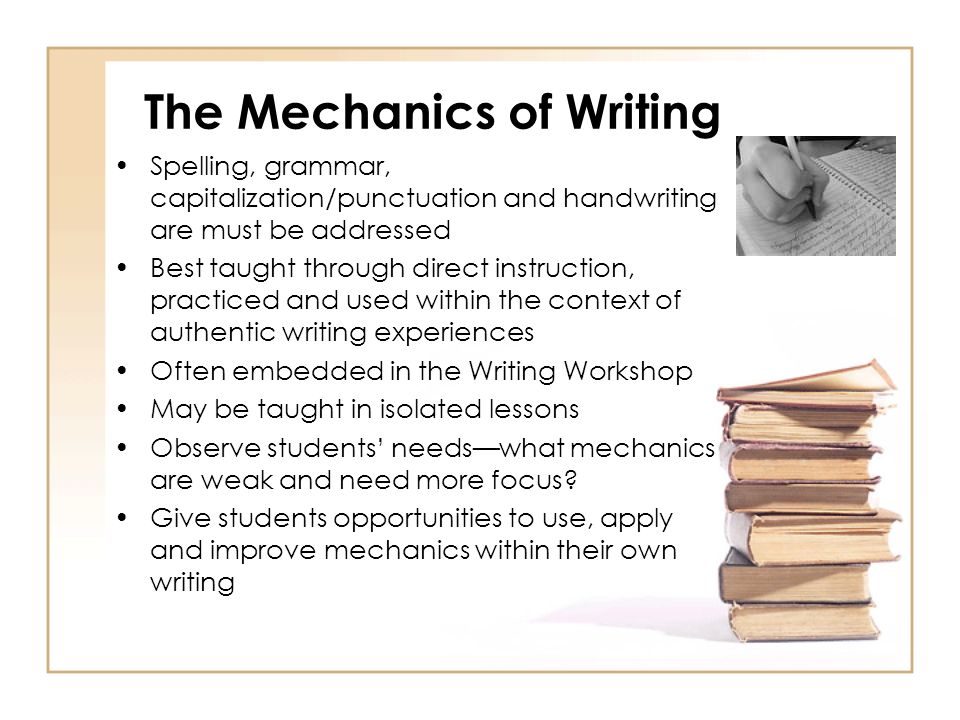
In 2020 I reviewed a product kit (instructional guide and cards) from SPELL-Links™ Learning By Design, Inc. entitled Wordtivities: Word Study Instruction for Spelling, Vocabulary, and Reading. Today, I am reviewing a companion to that product kit: SPELL-Links™ Wordtivities Word Lists. This 180-page guide contains sets of pattern-focused word lists for whole class, small group, and 1:1 word study instruction purposes. Each grade-level word list supports the simultaneous development of pattern-specific phonological (sound), orthographic (letter), and semantic morphological (meaning) skills. The aim of this guide is to systematically address spelling, reading, speaking, and listening all together by developing a neural network for literacy and language.
SPELL-Links™ Wordtivities Word Lists are useful for students 5+ years of age who have or are in the process of developing the following knowledge and skills:
- Letter-name knowledge
- Alphabetic letter writing ability
- Mastery of early phonological awareness (PA) skills by being able to segment words into syllables, understand and create rhyming words, and isolate sounds in words
- Basic concept knowledge of directionality (left/right; top/down)
The book is organized by patterns and grade levels (K-6 grade) and by the instructional focus. For each pattern, word lists are organized to support a specific instructional focus: phonological code, orthographic code, morphological code, storage and retrieval of orthographic representations, and writing application.

The Word Lists feature 128 patterns across grades K through 6. The number of patterns taught at each grade level ranges from 9 (K) to 25 (grades 4 and 5).
Here’s an example of a 4th-grade instructional overview:
Overview of Weekly Instruction . . . . . . . . . . . . . . . . . . . . . . . . . . . . . . . . . . . . . . . . . . . . . . . . . . . . . . . 88
Pattern: Prefixes pre- (before); mid- (middle); post- (after) . . . . . . . . . . . . . . . . . . . . . . . . . . . . . . . . 91
Pattern: Prefixes over- (above, more than); super- (superior, exceeding); under- (below, less than);
sub- (under, subordinate) . . . . . . . . . . . . . . . . . . . . . . . . . . . . . . . . . . . . . . . . . . . . . . . . . . . . . . . . . 92
Pattern: ‘l, r’ Clusters ‘lb, ld, lf, lk, lm, lp, lt, lth, lve, lse’ . . . . . . . . . . . . . . . . . . . . . . . . . . . . . . . . . . 93
Pattern: ‘l, r’ Clusters ‘rd, rf, rm, rn, rp, rt, rsh, rch, rth, rve, rge’ . . . . . . . . . . . . . . . . . . . . . . . . . . . . 94
Pattern: ‘l, r’ Clusters ‘rse, rce’ . . . . . . . . . . . . . . . . . . . . . . . . . . . . . . . . . . . . . . . . . . . . . . . . . . . . . . . 95
Pattern: Homophones Set 1 . . . . . . . . . . . . . . . . . . . . . . . . . . . . . . . . . . . . . . . . . . . . . . . . . . . . . . . . . . 96
Pattern: Suffixes -ion, -ation, -ition (N) . . . . . . . . . . . . . . . . . . . . . . . . . . . . . . . . . . . . . . . . . . . . . . . . 97
Pattern: Suffix -ment (N) . . . . . . . . . . . . . . . . . . . . . . . . . . . . . . . . . . . . . . . . . . . . . . . . . . . . . . . . . . . . 98
Pattern: Suffix -en (V, ADJ) . . . . . . . . . . . . . . . . . . . . . . . . . . . . . . . . . . . . . . . . . . . . . . . . . . . . . . . . . . . 99
Pattern: ‘m, n, ng’ Clusters ‘nd, nt, mp, mph, nth, nch, ngth, nge’ . . . . . . . . . . . . . . . . . . . . . . . . . 100
Pattern: ‘m, n, ng’ Clusters ‘nk, nc’ . . . . . . . . . . . . . . . . . . . . . . . . . . . . . . . . . . . . . . . . . . . . . . . . . . . 101
Pattern: ‘m, n, ng’ clusters ‘nce, nse’ . . . . . . . . . . . . . . . . . . . . . . . . . . . . . . . . . . . . . . . . . . . . . . . . . 102
Pattern: Homophones Set 2 . . . . . . . . . . . . . . . . . . . . . . . . . . . . . . . . . . . . . . . . . . . . . . . . . . . . . . . . 103
Pattern: Syllabic-r Vowel Sound as in bird, father . . . . . . . . . . . . . . . . . . . . . . . . . . . . . . . . . . . . . . . 104
Pattern: Suffix -ward (ADJ, ADV) . . . . . . . . . . . . . . . . . . . . . . . . . . . . . . . . . . . . . . . . . . . . . . . . . . . . . 105
Pattern: Unstressed Vowels . . . . . . . . . . . . . . . . . . . . . . . . . . . . . . . . . . . . . . . . . . . . . . . . . . . . . . . . 106
Pattern: Syllabic-l Vowel Sound as in bottle, pencil . . . . . . . . . . . . . . . . . . . . . . . . . . . . . . . . . . . . . 107
Pattern: Suffix -al (ADJ) . . . . . . . . . . . . . . . . . . . . . . . . . . . . . . . . . . . . . . . . . . . . . . . . . . . . . . . . . . . . 108
Pattern: Suffixes -able, ible (ADJ) …………………………………………….. 109
Pattern: Suffix -ous (ADJ) . . . . . . . . . . . . . . . . . . . . . . . . . . . . . . . . . . . . . . . . . . . . . . . . . . . . . . . . . . . 110
Pattern: Suffixes -ive, -ative, -itive (N, ADJ)………………………………………. 111
Pattern: Suffix -ure (N) . . . . . . . . . . . . . . . . . . . . . . . . . . . . . . . . . . . . . . . . . . . . . . . . . . . . . . . . . . . . . 112
Pattern: Contractions . . . . . . . . . . . . . . . . . . . . . . . . . . . . . . . . . . . . . . . . . . . . . . . . . . . . . . . . . . . . . . 113
Pattern: Prefix tele- (far); micro- (tiny) . . . . . . . . . . . . . . . . . . . . . . . . . . . . . . . . . . . . . . . . . . . . . . . . 114
Pattern: Prefixes mono-, uni-, bi-, tri-, quad-, oct- (number affixes) . . . . . . . . . . . . . . . . . . . . . . . . 115
Pattern Review
The weekly instruction will look as follows:
- Monday-Tuesday: Review of Phonological and Orthographic Codes (these word pattern lists are organized into 3 groups to support differentiated instruction)
- Wednesday–Thursday: Morphology
- Friday: Mental Orthographic Representations and Application to Sentence Writing
The book comes with access to digital Materials Library, which contains access to the following materials:
- List of pattern-loaded stories
- SPELL-Links™ Pattern Inventory & Analysis Tool (PIAT)
The appeal of the product for me is that it offers numerous group-based opportunities for the solidification of evidence-based instructional practices. The book comes with very detailed implementation instructions. A variety of daily activities allow students to further advance their abilities in the areas of prefixes and suffixes, numerous homophones and clusters, unstressed vowels and even contractions. The kit also offers several appendices that review the spelling rules for word roots prefixes and suffixes, as well as detailed recommendations for pattern-loaded reading materials. To me, the appeal of this curriculum is rather multifaceted. It continues to be very difficult to find an evidence-based group instruction curriculum, and Wordtivities Word Lists once again fit the bill for it. Because it focuses on skills integration of spelling, reading, speaking, and listening it allows the students to engage in contextually based opportunities to become better listeners, speakers, readers, spellers and writers.
You can find this kit for purchase on the SPELL-Links™ Learning By Design, Inc. Store HERE.
And now for the fun part. Want to win your own copy of SPELL-Links™ Wordtivities Word Lists? Enter to win here: I want to win SPELL-Links Wordtivities Word Lists! | Learning By Design They’ll send one lucky person a copy of SPELL-Links™ Wordtivities Word Lists. Entries are accepted until 3/1/24 at 5 pm CST. The winner will be notified by email.
 Lately, I’ve been seeing more and more posts on social media asking for testing suggestions for students who exhibit
Lately, I’ve been seeing more and more posts on social media asking for testing suggestions for students who exhibit  As a speech-language pathologist (SLP) working with school-age children, I frequently assess students whose language and literacy abilities adversely impact their academic functioning. For the parents of school-aged children with suspected language and literacy deficits as well as for the SLPs tasked with screening and evaluating them, the concept of ‘academic impact’ comes up on daily basis. In fact, not a day goes by when I do not see a variation of the following question: “Is there evidence of academic impact?”, being discussed in a variety of Facebook groups dedicated to speech pathology issues.
As a speech-language pathologist (SLP) working with school-age children, I frequently assess students whose language and literacy abilities adversely impact their academic functioning. For the parents of school-aged children with suspected language and literacy deficits as well as for the SLPs tasked with screening and evaluating them, the concept of ‘academic impact’ comes up on daily basis. In fact, not a day goes by when I do not see a variation of the following question: “Is there evidence of academic impact?”, being discussed in a variety of Facebook groups dedicated to speech pathology issues. 
 Because the children I assess, often require supplementary reading instruction services, many parents frequently ask me how they can best determine if a reading specialist has the right experience to help their child learn how to read. So today’s blog post describes what type of knowledge reading specialists ought to possess and what type of questions parents (and other professionals) can ask them in order to determine their approaches to treating literacy-related difficulties of struggling learners.
Because the children I assess, often require supplementary reading instruction services, many parents frequently ask me how they can best determine if a reading specialist has the right experience to help their child learn how to read. So today’s blog post describes what type of knowledge reading specialists ought to possess and what type of questions parents (and other professionals) can ask them in order to determine their approaches to treating literacy-related difficulties of struggling learners. 
 Recently I wrote a blog post regarding how SLPs can
Recently I wrote a blog post regarding how SLPs can 
 Now let us select a few writing goals for this student.
Now let us select a few writing goals for this student. The former looks at such writing aspects as the use of correct spelling, punctuation, and capitalization, paragraph formation, etc.
The former looks at such writing aspects as the use of correct spelling, punctuation, and capitalization, paragraph formation, etc. With respect to syntax, a typical student that age is expected to write complex sentences possessing nominal, adverbial, as well as relative clauses.
With respect to syntax, a typical student that age is expected to write complex sentences possessing nominal, adverbial, as well as relative clauses.
 Based on the above-written sample, the student’s persuasive composition content (thought formulation and elaboration) was judged to be significantly immature for his grade level and is commensurate with the abilities of a much younger student. The student’s composition contained several emerging claims that suggested a vague position. However, though the student attempted to back up his opinion and support his position (animals should not be performing in circuses), ultimately he was unable to do so in a coherent and cohesive manner.
Based on the above-written sample, the student’s persuasive composition content (thought formulation and elaboration) was judged to be significantly immature for his grade level and is commensurate with the abilities of a much younger student. The student’s composition contained several emerging claims that suggested a vague position. However, though the student attempted to back up his opinion and support his position (animals should not be performing in circuses), ultimately he was unable to do so in a coherent and cohesive manner. In recent months, I have been focusing more and more on speaking engagements as well as the development of products with an explicit focus on assessment and intervention of literacy in speech-language pathology. Today I’d like to introduce 4 of my recently developed products pertinent to assessment and treatment of literacy in speech-language pathology.
In recent months, I have been focusing more and more on speaking engagements as well as the development of products with an explicit focus on assessment and intervention of literacy in speech-language pathology. Today I’d like to introduce 4 of my recently developed products pertinent to assessment and treatment of literacy in speech-language pathology. First up is the
First up is the  Next up is a product entitled
Next up is a product entitled  The product
The product  Finally, my last product
Finally, my last product